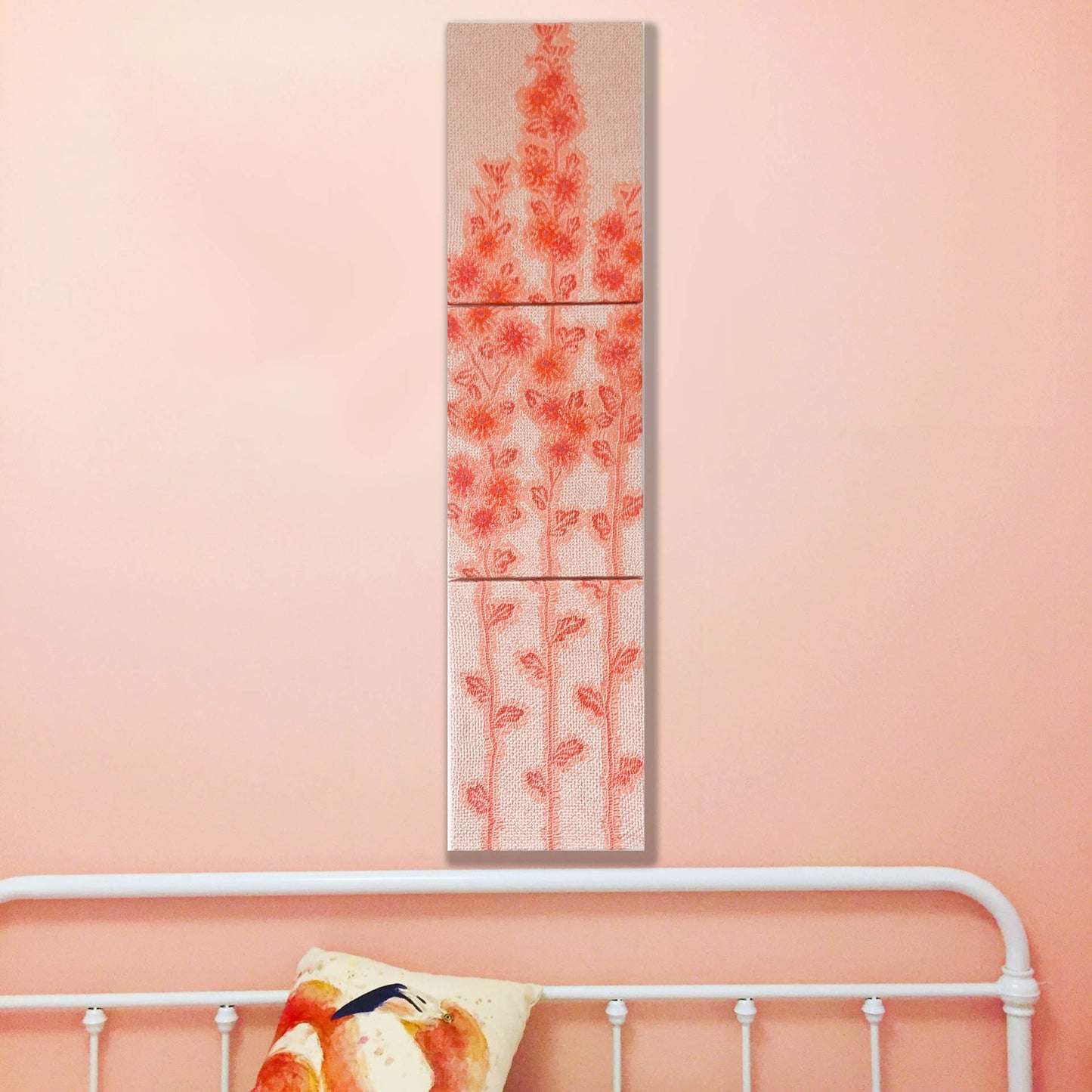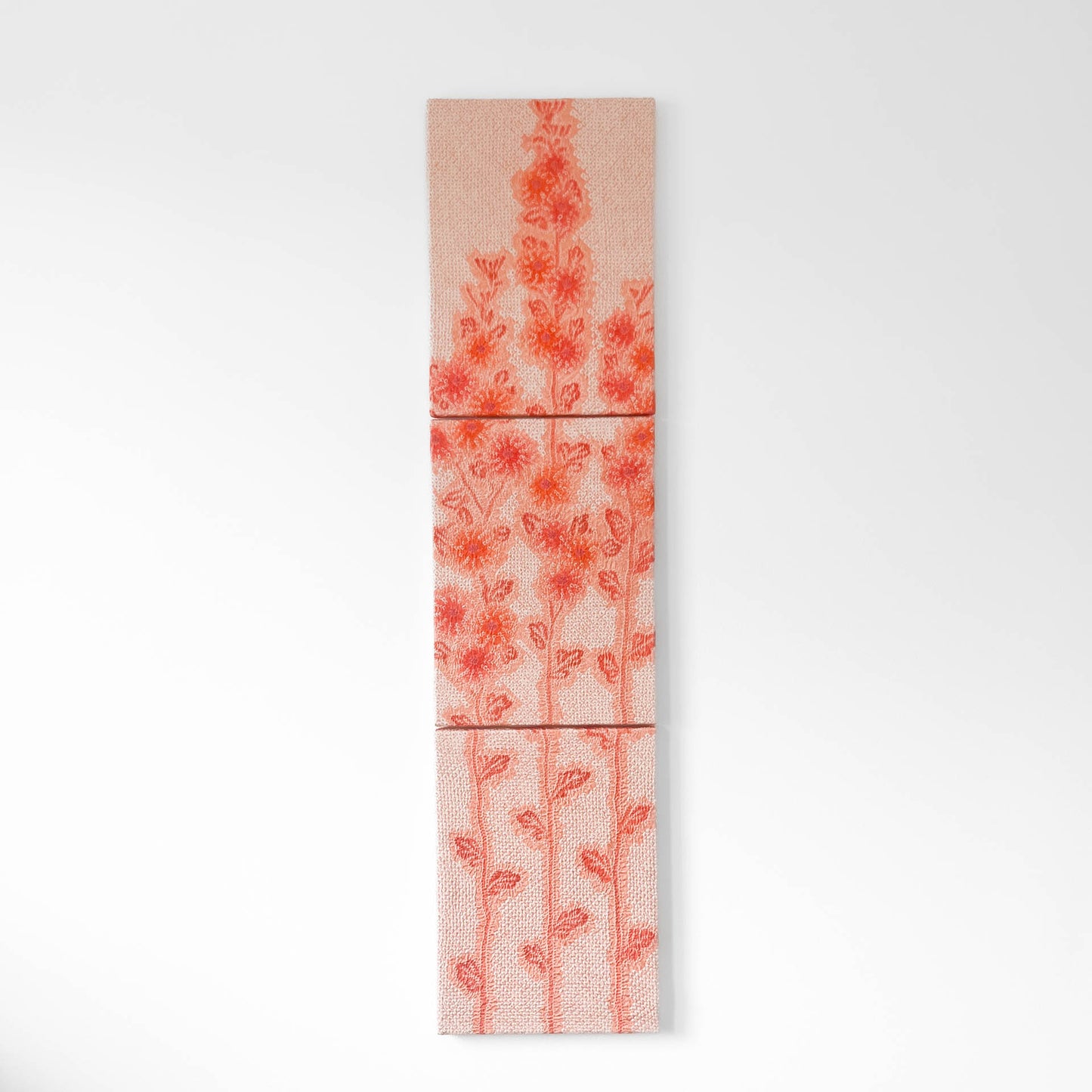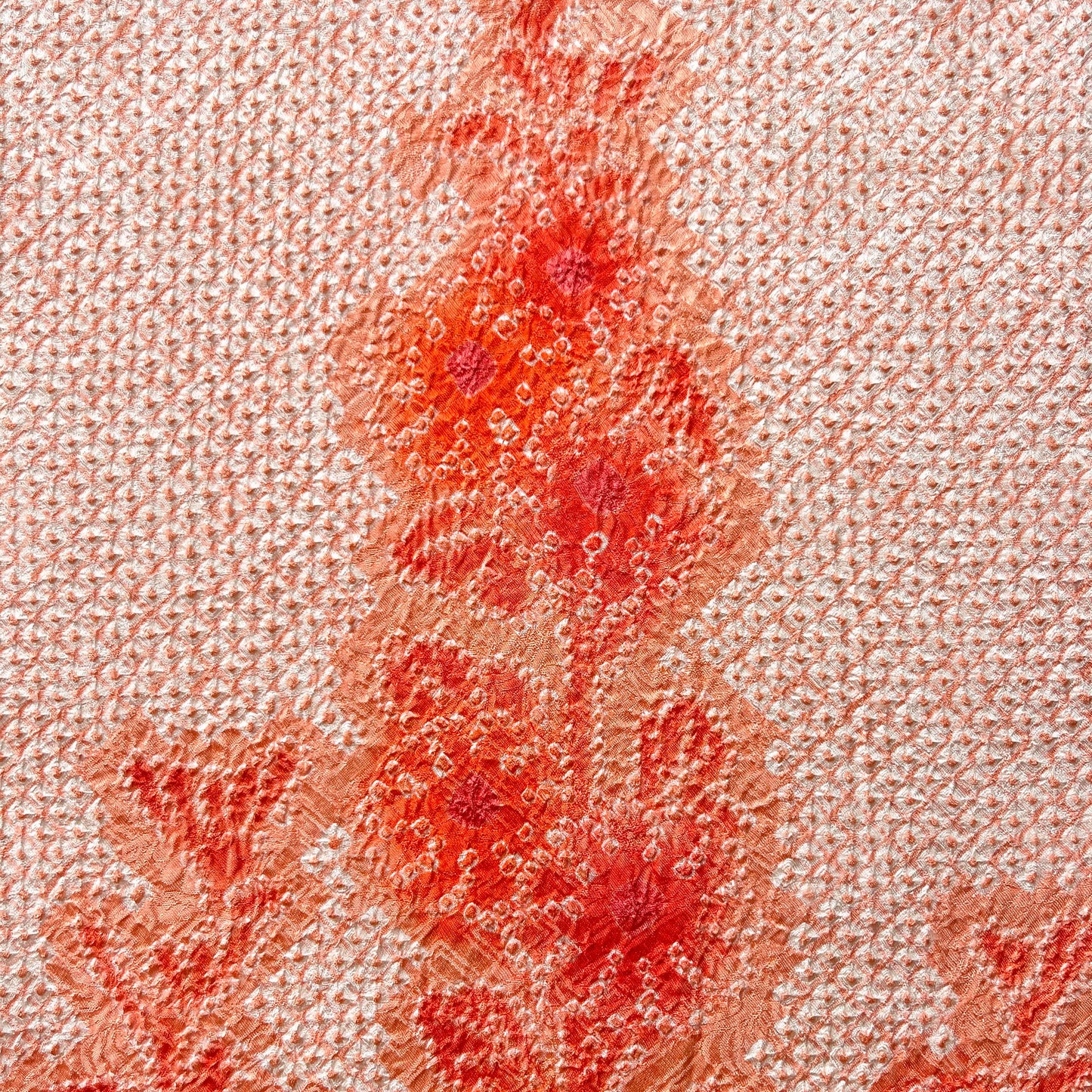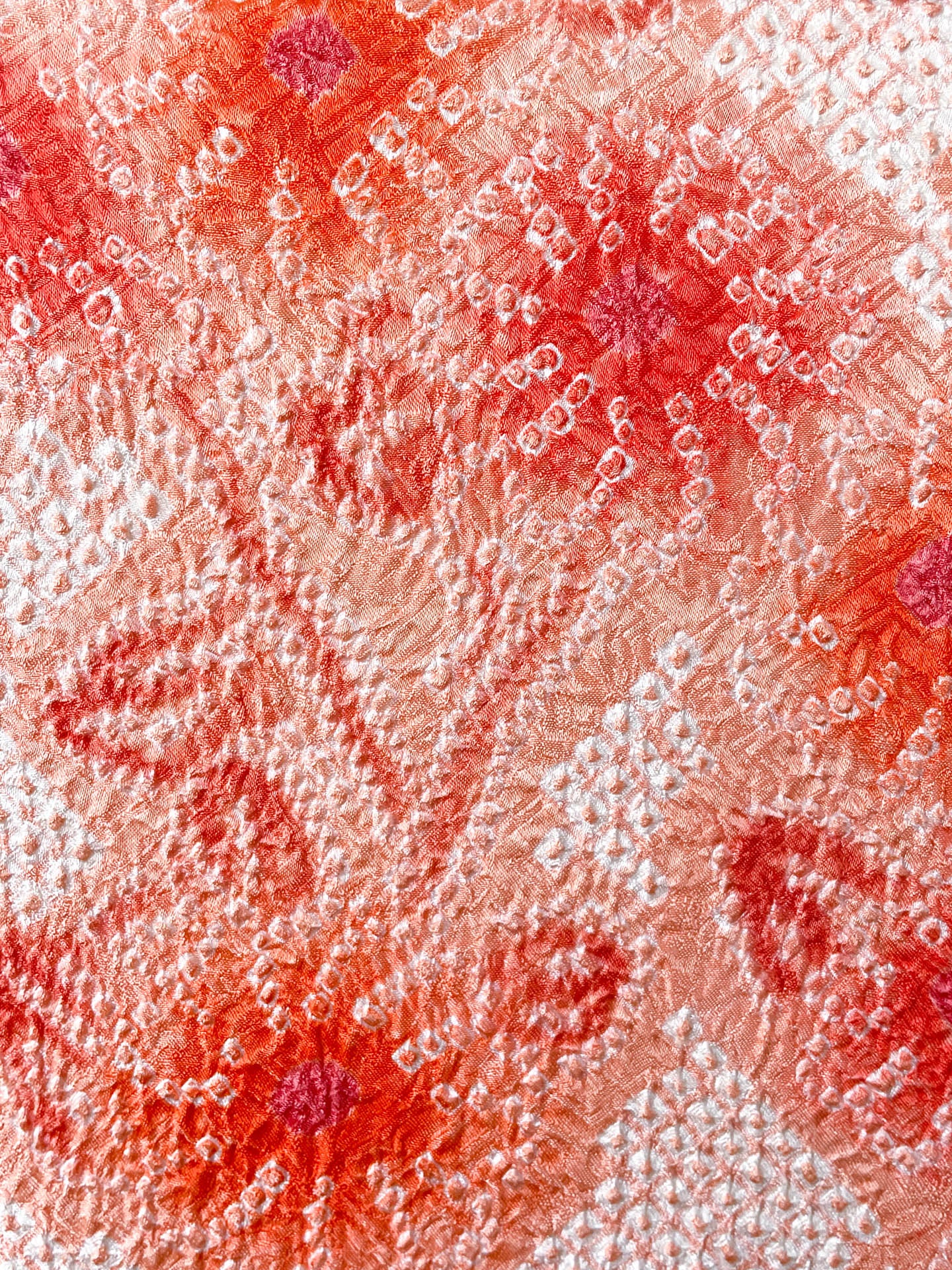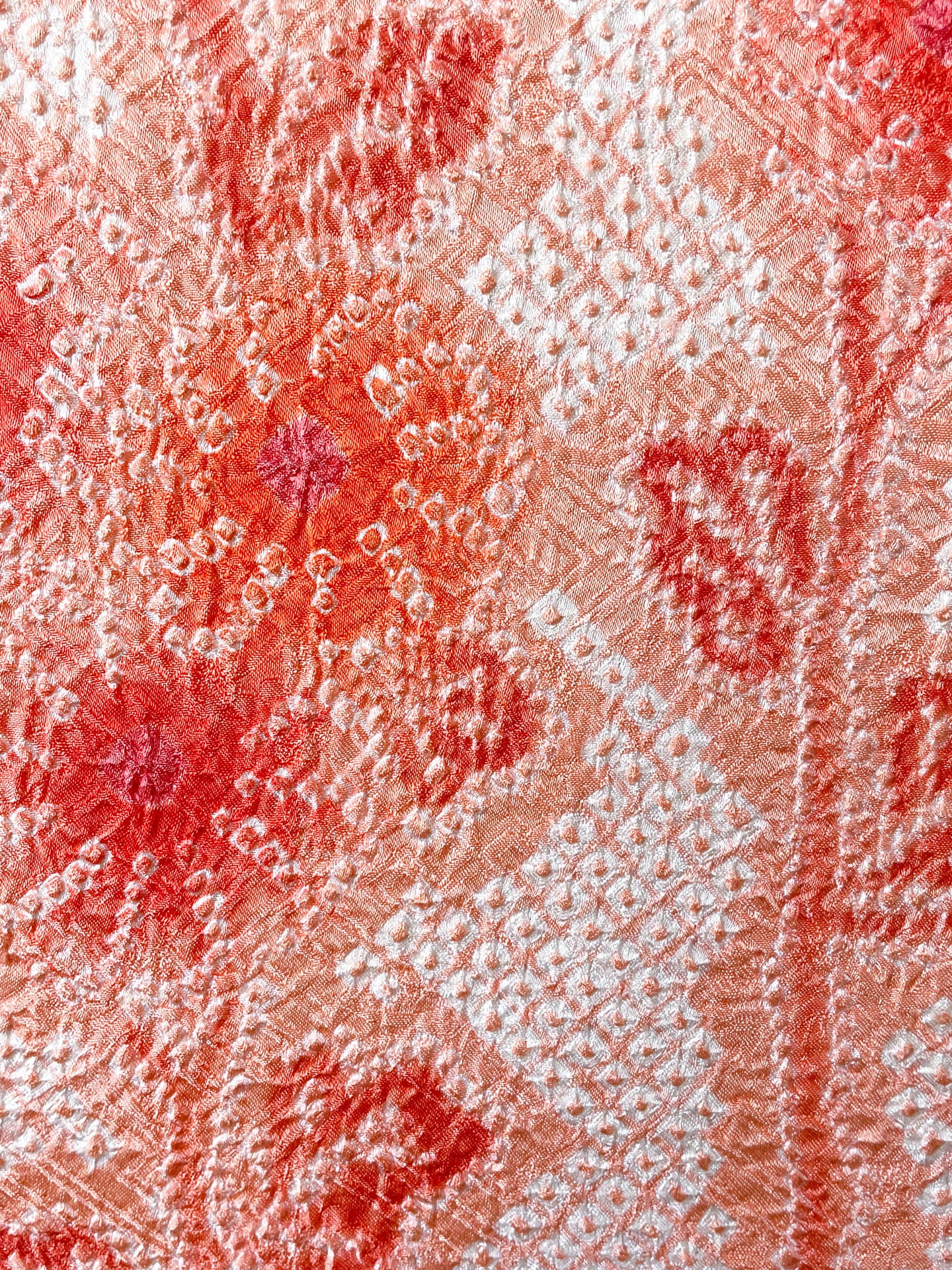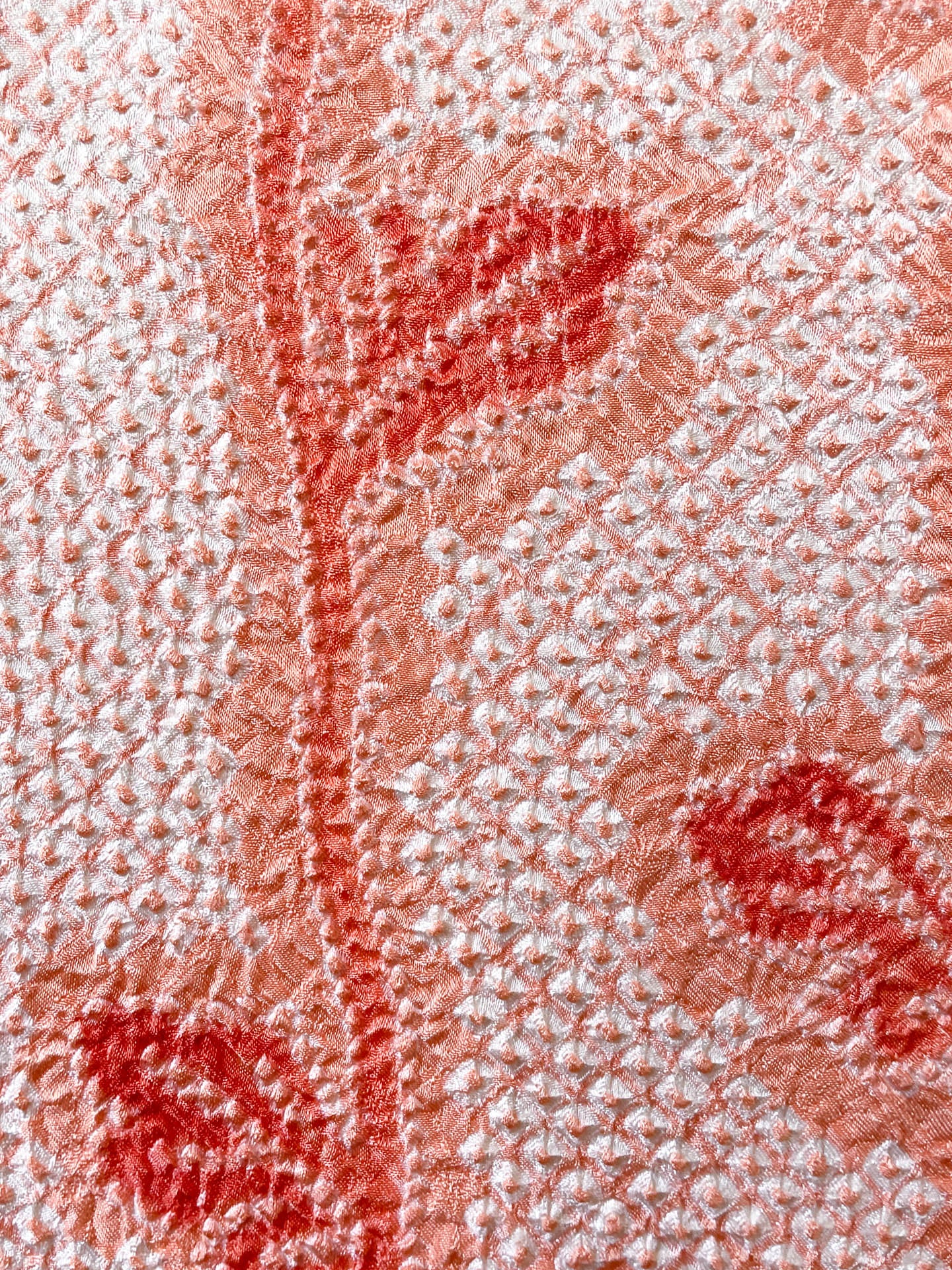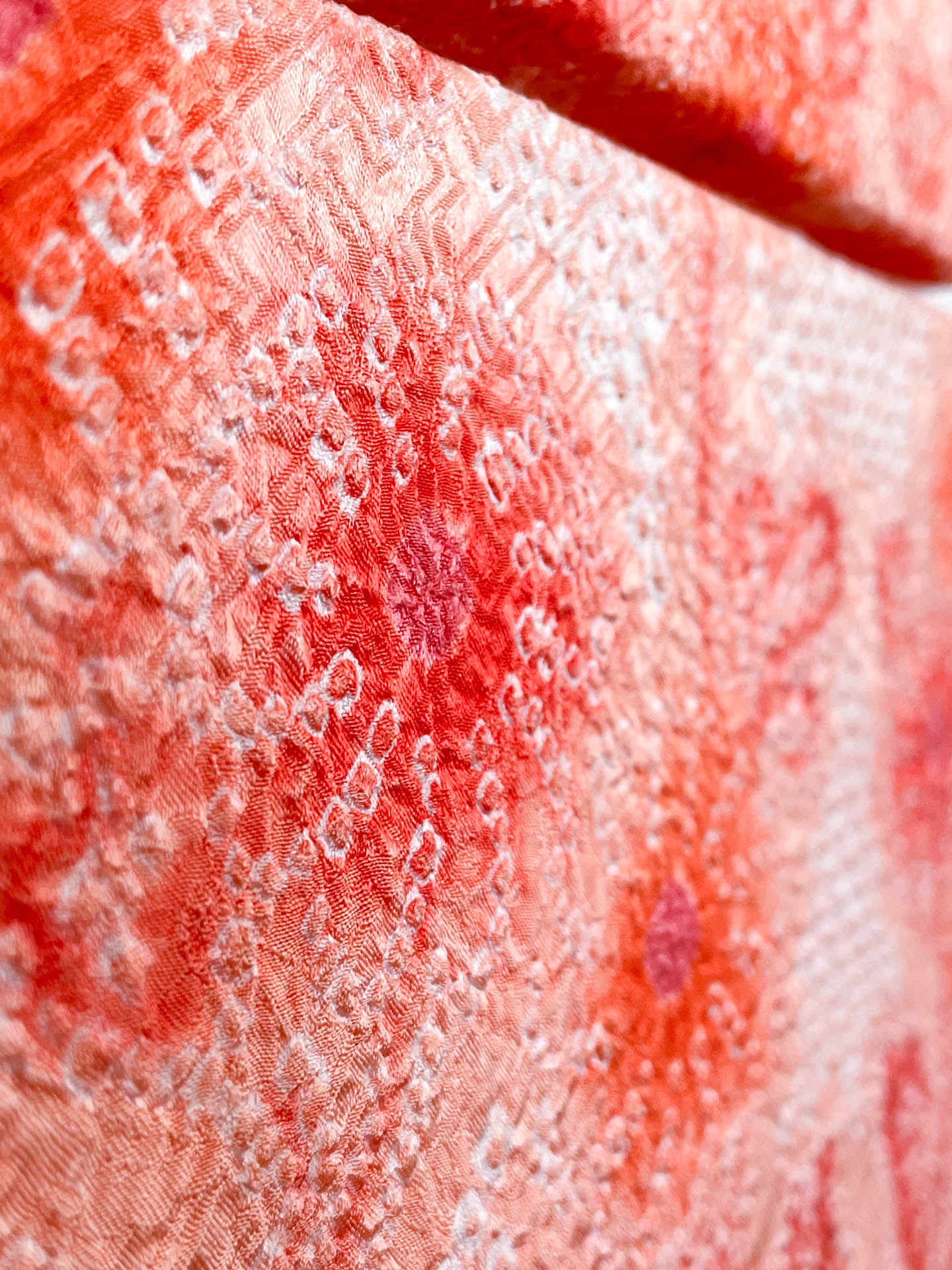Growing ~Longevity~
Growing ~Longevity~
Verfügbarkeit für Abholungen konnte nicht geladen werden
Size
approx. 34cm x 24cm x 2cm (3 items)
Materials
silk (outside-layer) , wooden frame, cotton linen canvas (under-layer)
About this canvas
This set is a depiction of a tall chrysanthemum stem, entirely dyed in a traditional shibori technique.
Period / Story
The haori featured in this canvas was created and used during the late Showa period (1960-80ies).
Explanation and meaning of pattern and colors
A charming chrysanthemum flowers all around a stem seem to reach the heavens.
The chrysanthemum flower, which retains its vitality long after being cut, symbolizes longevity, purification from malevolent spirits, and good fortune. In ancient times, during the Kamakura period (1185-1333), emperors loved the chrysanthemum pattern, and it remains the most prestigious flower and the emblem of the Japanese imperial family to this day.
The entire artwork is dyed in a gentle vermilion hue. Vermilion, also known as "shu-iro," is a vibrant red shade with yellow undertones. In the past, the finest red pigment was referred to as "shu-iro."
Vermilion also carries the symbolism of authoritative power, and it is said that when ancient tombs are excavated, vermilion is often found alongside the remains of nobility. Beyond its historical significance, vermilion holds various other meanings, such as the warmth of fire, the brilliance of the sun, protection against malevolent forces, prevention of misfortune, the blessing of offspring, and fertility.
Characteristics of the fabric
The kimono fabrics in this set are all meticulously dyed using a tie-dyeing technique known as "soshibori," which has been practiced in Japan since the 6th to 7th century.
In this intricate process, the fabric is bound using threads, boards, and specialized tools to create areas where the dye cannot penetrate. Once the entire cloth is dyed, the threads are carefully untied, leaving behind the bound areas untouched. As a result, the colors emerge in a three-dimensional textures, forming intricate patterns.
Because tie-dyeing is a labor-intensive, handcrafted method, only a limited number of pieces, ranging from a few hundred to a few thousand, can be produced in a day. It's worth noting that this process can take several months to a year or even longer to complete, as more than 200,000 knots need to be tied for a single kimono.
The "Kanoko shibori" applied to the entire fabric of this haori is a particular type of so-called "fawn" shibori, known for its resemblance to the spots on a young deer, which adds to its unique and appealing appearance.
Decoration Advice
Canvas can be displayed on a table, wall, etc. Hanging on a wall requires hooks, tacks or nails. It can also be displayed propped up on an easel. Ideal for a room makeover, housewarming gift, present, or souvenir for a loved one.
Precaution
All the works are made from real kimonos, antiques and vintages. For this reason, the fabric may have traces of long-term use and minor fabric damages. In case there are any scratches or stains, we always add a photo of the area on the item page, so please check before purchasing. Regarding precaution, cancellation and refund policy, please refer to the refund policy in the footer section of the site for information.
The last pictures in the gallery are the pictures of the reverse side of the canvas, the attachments and the package.
